The Ultimate Guide to Growing and Caring for Your Poinsettias
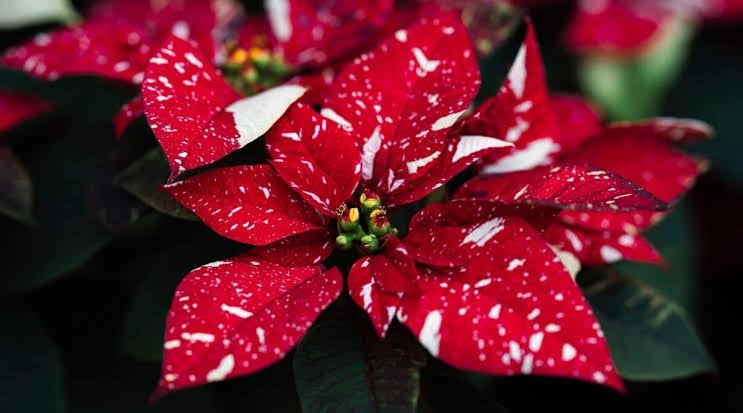
Table of Contents
There’s nothing quite mesmerising like the sight of a Poinsettia in full bloom. Its vibrant red leaves beautifully contrast with the green of its leaves. These iconic plants are a symbol of the festive season as it lights up homes with vibrance, commonly known as Christmas Star.
The Poinsettia has a rich history, dating back to the ancient Aztecs; it was first adopted by Mexico in the 19th century. A man named Joel Roberts was so captivated by the beauty and brought it back to his homeland. Since then, Poinsettia has been embraced globally. They have become an inseparable part of winter celebrations. You might be wondering why this plant holds so much significance at Christmas, the reason being the shape of the Poinsettia flower and leaves. They symbolise the Star of Bethlehem, which helped the wise men reach Jesus. At the same time, the red flowers of the plant symbolise the blood of Christ.
But as captivating as these plants are, growing and caring for them can be challenging at times. In this guide, we’ll share everything that can help you take care of and grow your Poinsettia.
Choosing Your Poinsettia
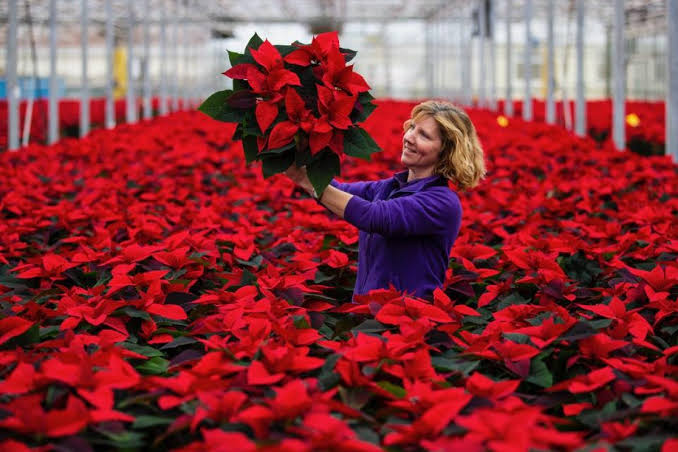
If you are going to pick a Poinsettia plant from the store, there are a few things that you need to know:
- Size – A healthy Poinsettia will have a good balance between height and width. Ideally, the plant’s diameter should be 2.5 times the height of the pot. A healthy plant should look lush and full rather than being too tall and sparse or too short and cramped.
- Foliage – Leaves should be of rich green colour and should reach all the way down to the soil. Yellowing leaves and fallen lower leaves are a sign of overwatering, underwatering, or disease.
- Bracts – Don’t mistake them for flowers, although they are the star of the show. Bracts are coloured leaves. Make sure that they are brightly coloured and don’t have any green borders around the edges. Green edges are the sign of an immature plant that might not last for long.
- Flowers – At the end, check out their actual flowers. You can find them at the centre of the bract clusters. They are really small berry-like shapes and come in green or yellow colour. These tiny flowers should be tightly closed; an open flower indicates that the plant is old.
Remember, these plants are sensitive to cold temperatures, hence make sure to wrap a protective sleeve before taking it outside.
Growing Poinsettia: Essential Requirements
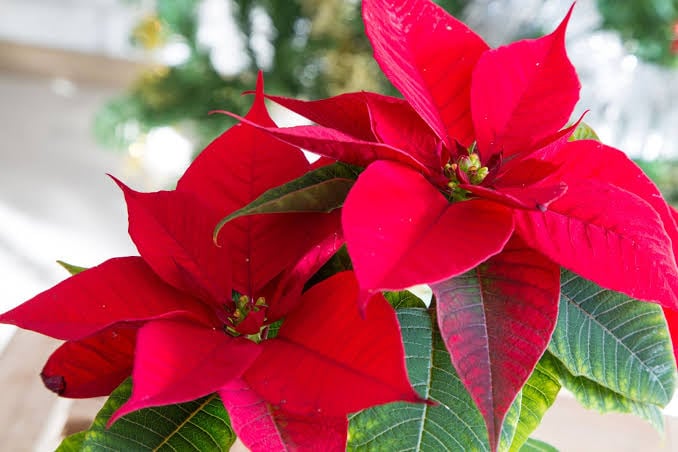
Poinsettia originated from the tropical deciduous forests of Mexico and adapted to the specific placement, light, watering, and temperature conditions. In order to keep Poinsettia healthy and blooming, it’s important to mimic similar conditions as much as possible. Let’s understand the requirements that will allow your plant to thrive and stay healthy.
1. Placement
Poinsettia prefers a sunny and dry area, choosing a spot where they receive plenty of indirect sunlight throughout the day. A spot near a sunny window is ideal. The sudden change in temperature can make Poinsettia shed leaves prematurely. Make sure to keep your plant away from cold areas and excessive heat areas like near appliances, fireplaces, or ventilation ducts.
2. Lighting
Poinsettia demands at least 6 hours of indirect sunlight a day. They can also tolerate direct heat, but indirect heat is better for their leaves to retain their vibrant colours.
One interesting thing about poinsettias plants is that they change colour depending on the length of the daylight hours. In order to change colour from green to red, pink, or white, the plant requires darkness for 5 to 10 weeks for at least 12 to 14 hours. To do that, you can move the plant into a dark room, or you can cover the plant with a box to ensure complete darkness.
3. Watering
Watering is yet another important aspect of Poinsettia’s health. Poinsettia cannot sustain an overly wet or overly dry environment. Overwatering can result in root rot, and underwatering might result in dry roots, which will, in turn, make their leaves fall.
Use a well-draining pot mix with sufficient drainage holes, and check the topsoil regularly. When the topsoil seems dry while touching, water the plant thoroughly until it drains out from the bottom but make sure that the plant doesn’t sit in standing water.
4. Temperature
Being a plant that thrives in tropical forests, Poinsettia’s idle temperature ranges from 65 – 75°F (during the day) to 60 – 65° F (during the night). They prefer warmer climates and cannot survive temperatures below. 50° F.
They also require a humid environment; in case your home’s air is too dry, you might have to provide extra humidity. You can place the pot on a tray and fill the tray with pebbles. Pour some water into that tray to make sure that the bottom of the pot doesn’t touch the water. It’s the evaporation that will increase the humidity around the plant.
How to Grow Poinsettia
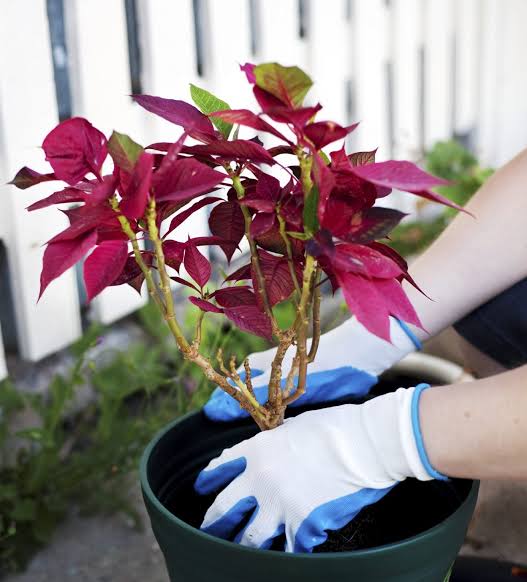
Growing Poinsettia is relatively easiest if grown from established plants that are bought from a nursery. Although it’s totally possible to grow them from scratch, it can be a rewarding experience. However, it will require a lot of patience as it will take time to grow those vibrant bracts.
1. Through Seeds
Firstly collect the seeds from the small yellow flowers that are there in the middle of the plant once the plant is faded. Then prepare a PPT with compost and water it thoroughly, sprinkle the seeds at the top and cover it with a thin layer of compost. Poinsettia requires a warm and bright spot. Place the pot accordingly. These seedlings will take 1-2 weeks to grow. Once they look strong enough, you can transfer them to their individual pots.
2. Through Cutting
During the late spring or early summer, take the new growth and separate the cutting (4-6 inches long). Remove the leaves from the lower half of the cutting and dip the bottom end in the rooting formula. It will fasten the process of root growth. Place the cutting in a pot and provide the similar placement requirements mentioned above. Within 3-4 weeks, roots will start developing. You can gently tug them to feel the roots. Once you feel that roots are showing enough resistance, you can place them separately.
How to Take Care of Poinsettia Throughout the Year
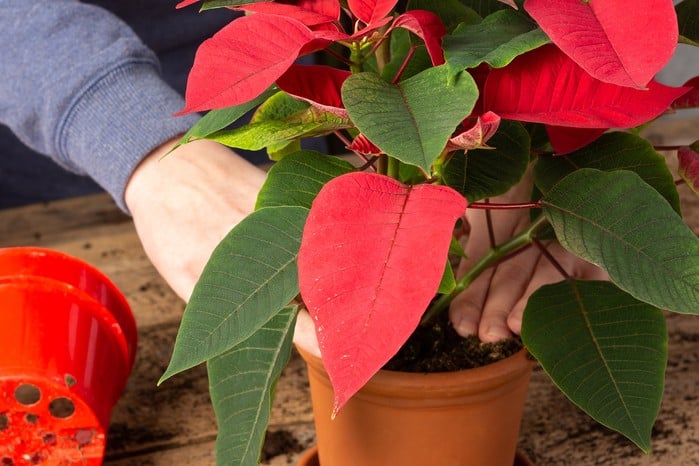
Here is a month-to-month guide for taking care of your Poinsettia throughout the year:
January – March: After the winter bloom, just make sure to water the plant regularly as soon the top soil starts to dry down. Keep the plant in a well-lit area where you’ll get enough indirect sunlight.
April: Prune the plant this month to encourage growth and healthy lush. You can cut back to 4-6 inches. Make sure to keep on watering them regularly.
May – June: Once you’ll start seeing the new growth, plant your Poinsettia in a bigger pot. Fertilise the soil every 2 weeks to help Poinsettia grow to their best form.
July – September: Pinch back the tips of the plant to encourage new and bushier growth. Continue to provide fertilizer every 2 weeks and make sure they are receiving enough light.
October – November: These are the months that are perfect for their colour change regime. Here the plant will have to follow a strict regimen. The plant will need 10 hrs of light and 14 hrs of complete darkness. Continue this for 8 – 10 weeks for best results.
December: Once you start seeing the colour develop, place the plant back to its previous settings. By mid-Dec, your Poinsettia will be ready to showcase their festive colours.
Poinsettia Blooming Cycle
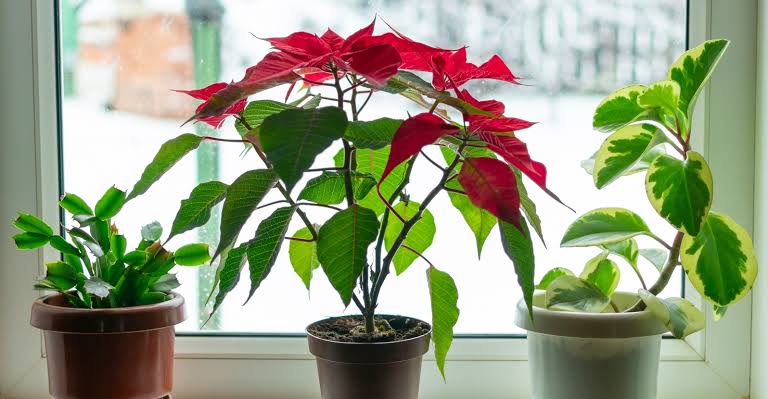
Understanding Poinsettia blooming cycle is key to caring for these plants, as unlike many plants, poinsettia goes through a cycle of colour transformation, bloom, and regrowth. Which not just makes them quite fascinating but also develops the experience of gardening.
As a tropical plant, Poinsettia aligns with seasonal change. During the late fall and early winter, the days are short. The change in daylight and darkness triggers the colour transformation, a process called photoperiodism. As mentioned earlier point CDS require 12 to 14 hours of darkness over 5 to 10 weeks.
Once the process of colour shifting happens, the true flower of the poinsettia begins to grow. These flowers are really small and are green or yellow in colour. This blooming phase typically takes place in December and January. Then during Late spring to early summer, you can prune the plant to encourage lush and bushy growth.
Common Poinsettia Problems and Their Solutions
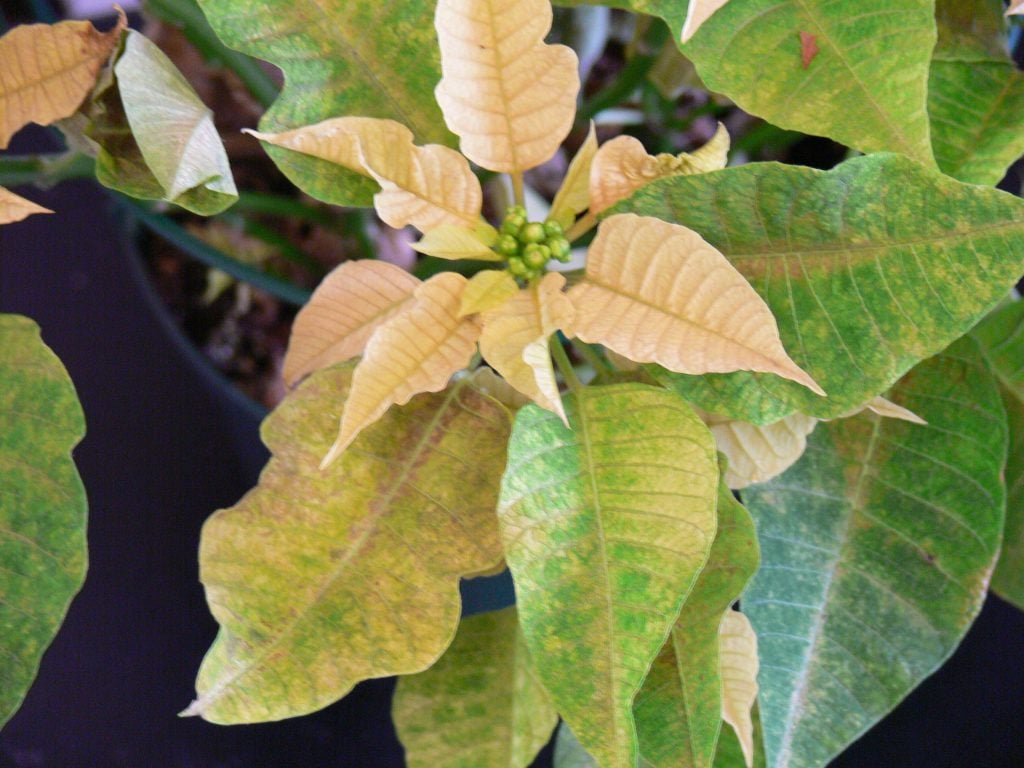
Even though Poinsettia seems like a difficult plant to grow, it’s relatively easy to care for. But like just any other plant, Poinsettia can also encounter various issues, such as:
- Leaf drop – When the leaves start dropping, it is usually due to a drastic change in temperature. Make sure your plant is kept at a constant temperature, and check if the water is draining properly or not. The size should dry out after some time of watering it.
- Wilting – If these leaves start wilting, It might be due to overwatering or underwatering. Check the soil as frequently as possible. Drainage and dry soil are the key parameters that can help you avoid it.
- Lack of colour – If your poinsettia is not showing any colour development, It might be due to insufficient darkness. In order to trigger colour development, poinsettia strictly requires 14 hours of complete darkness for 8 to 10 weeks.
- Leggy appearance – if your poinsettia looks tall and thin. It might be due to insufficient light, or it may need pinching. Printing back the tips of the branches in the summer can encourage bushier growth.
- Whitefly infestation – Whiteflies are a common pest issue with Poinsettia. You might notice these tiny white insects flying around when you move or shift the plant. You can treat these whiteflies with the help of insecticidal soap or neam oil. Make sure to check other infected plants and isolate the affected plant to prevent pests from spreading.
- Diseases – Fungi, bacteria, or viruses can harm Poinsettia and cause diseases, resulting in spots, colour changes, or leaf distortion. To avoid that, ensure appropriate ventilation, maintain good plant hygiene, abstain from overwatering and isolate any harmed plant parts as soon as possible. Do employ a suitable fungicide or bactericide occasionally.
Final Thoughts
There is no doubt that Poinsettia is a delight to have in homes and offices, especially during the holiday season. Although it does take some effort while take care of and grow these lovely plants, it’s surely a gratifying process. Successfully growing and sustaining these plants requires an understanding of their natural environment, preferred light and temperature ranges, watering requirements, and flowering cycle.
Each step is crucial in the Poinsettia care process, from choosing a healthy plant or growing one from scratch to providing the ideal conditions. The longevity of the plant can be guaranteed by swiftly and efficiently addressing typical problems like leaf drop, wilting, pest infestation, etc.
Poinsettia will definitely flourish and provide their stunning beauty to your house year after year if you show little perseverance, diligence, and appropriate care.

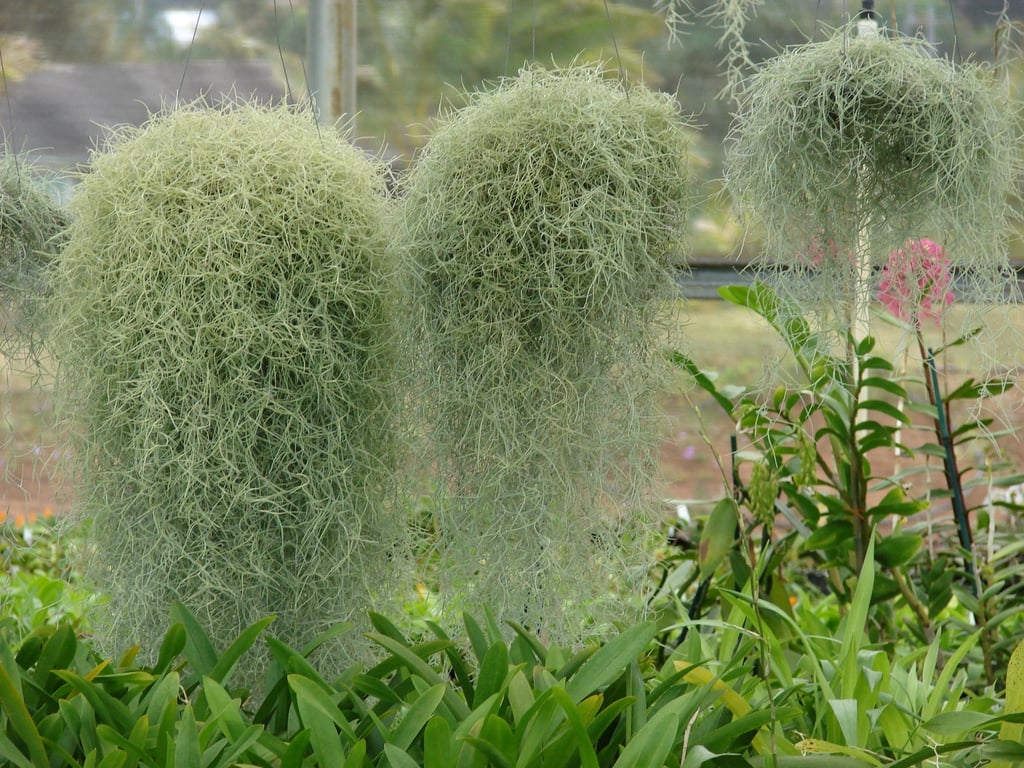
![How To Grow and Care for Dahlias [UK]](https://staging.thearches.co.uk/wp-content/uploads/How-To-Grow-Dahlias-1.jpg)
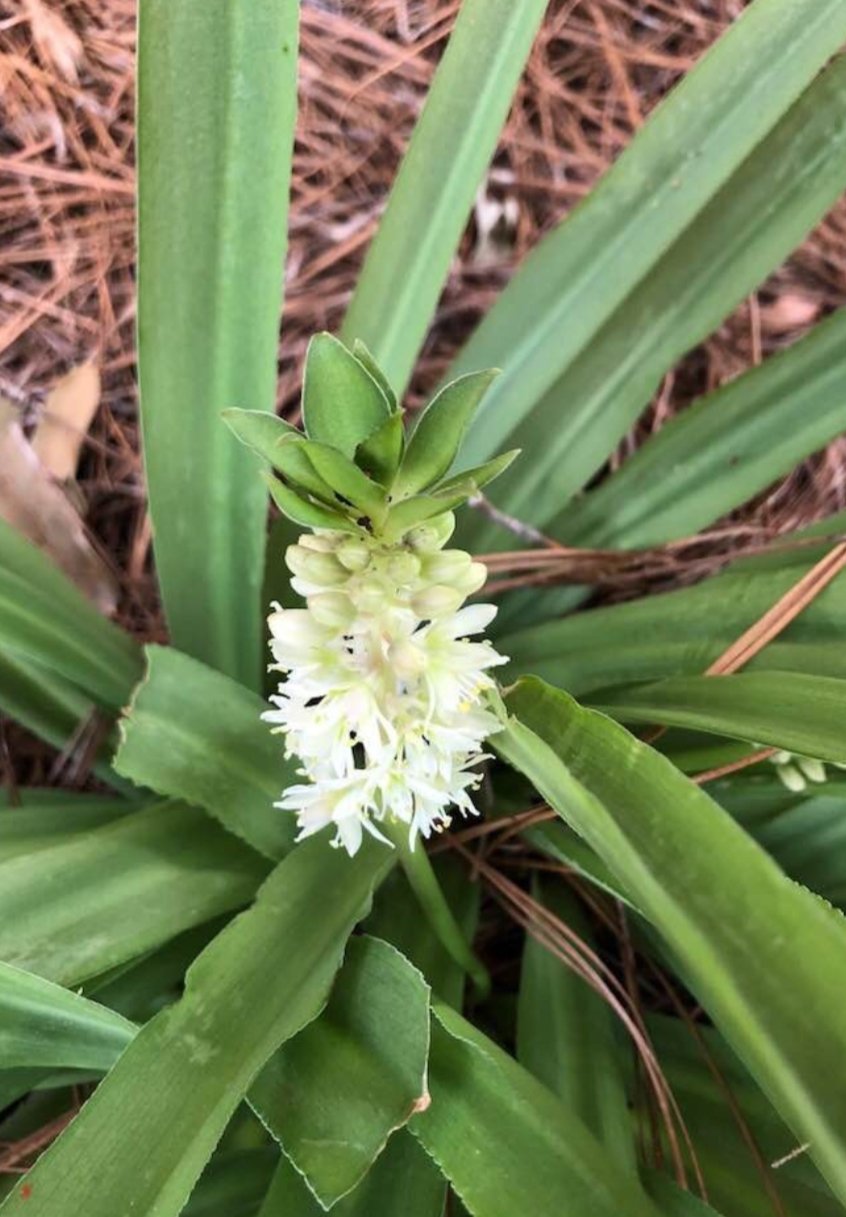
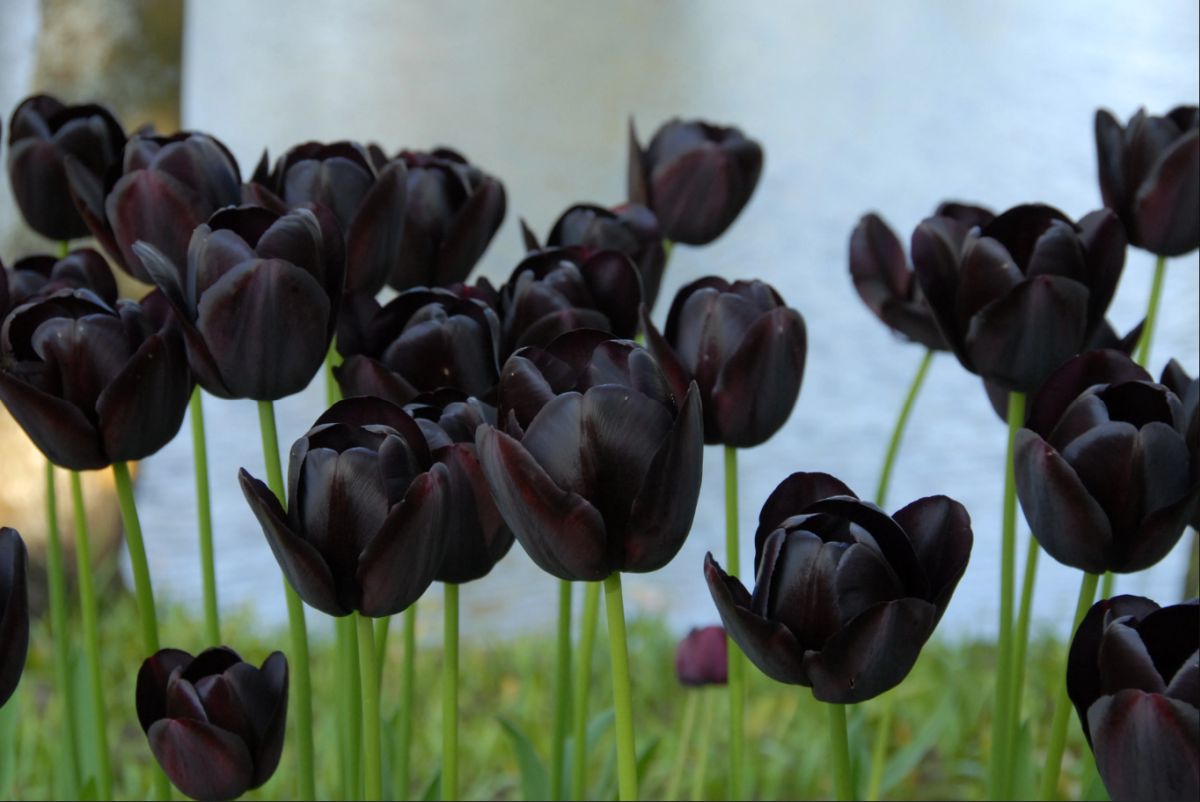
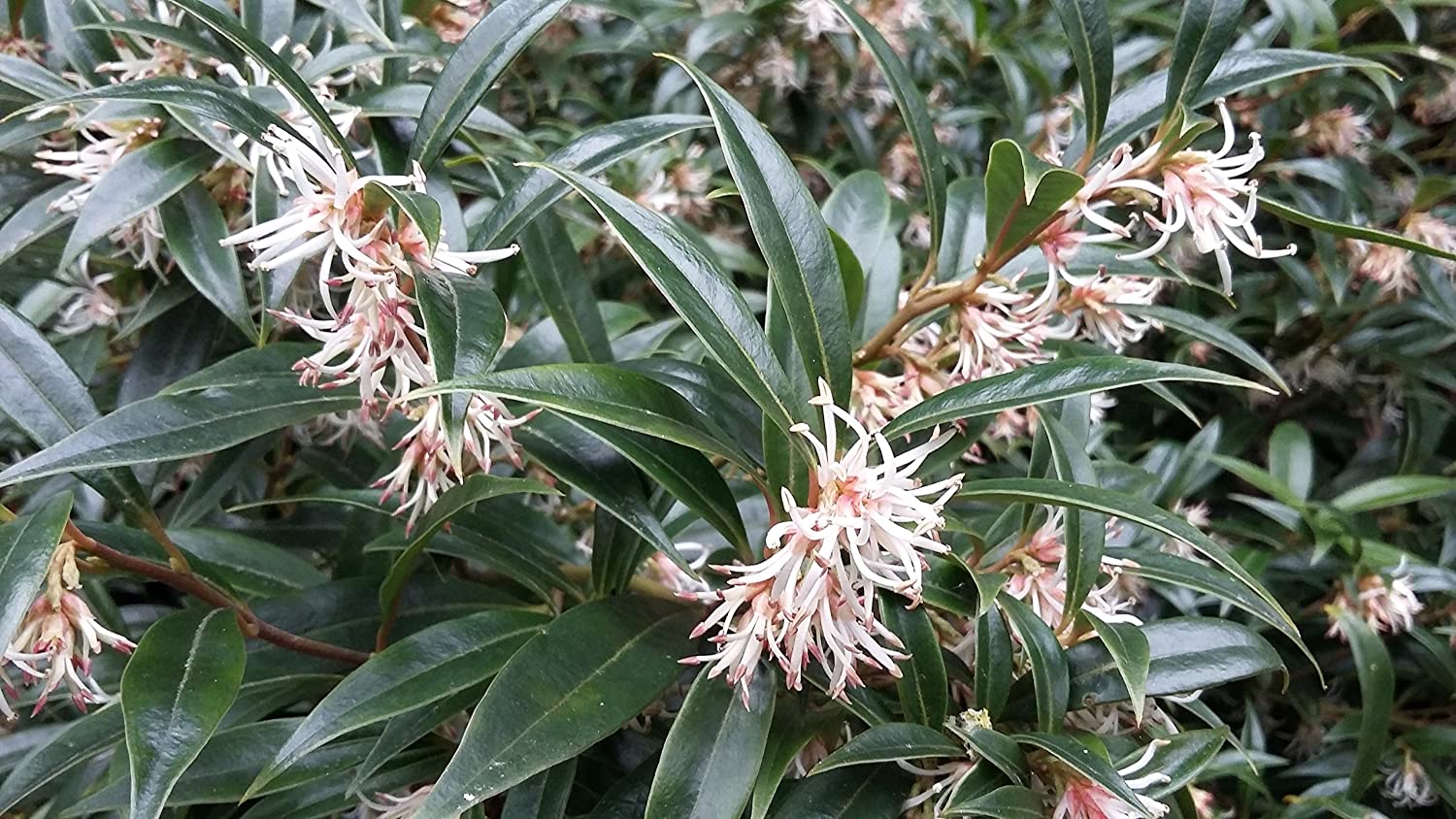
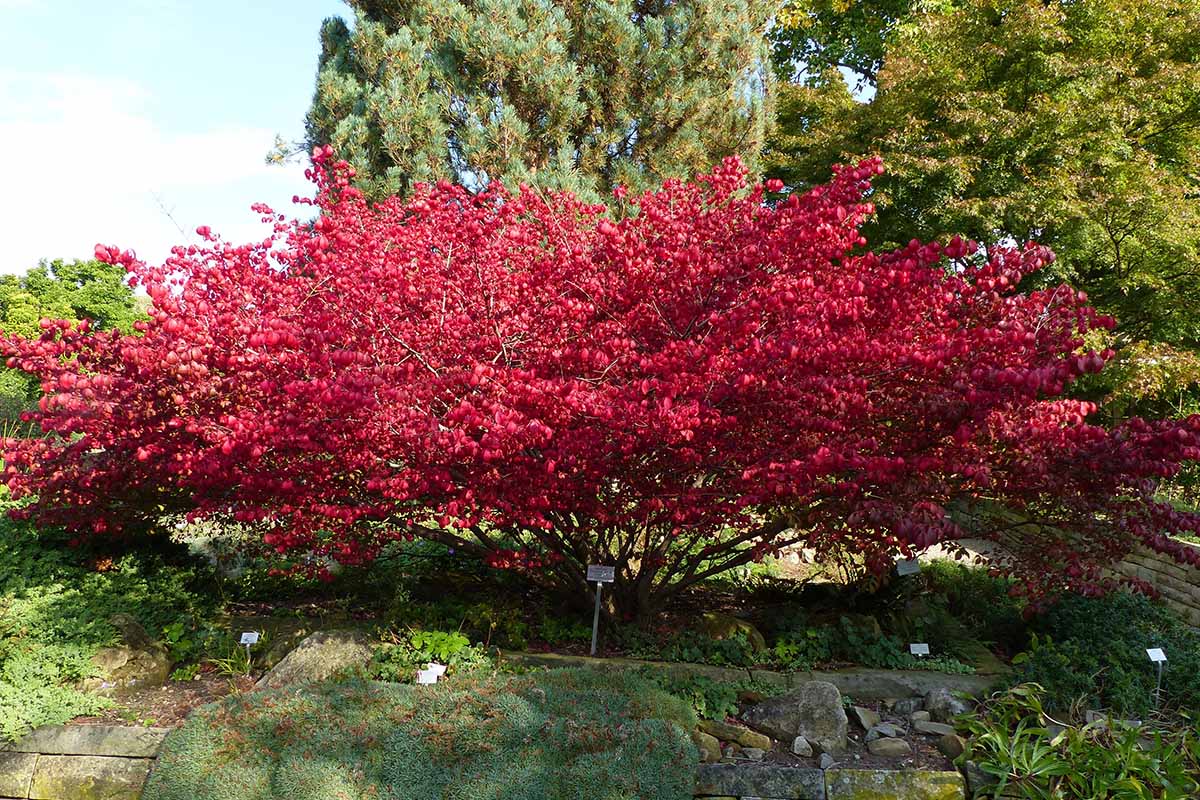
2 Comments